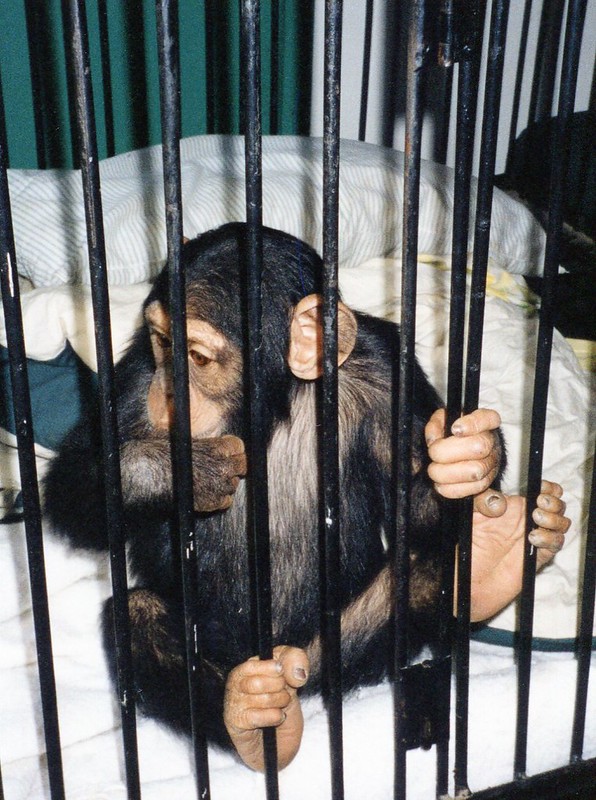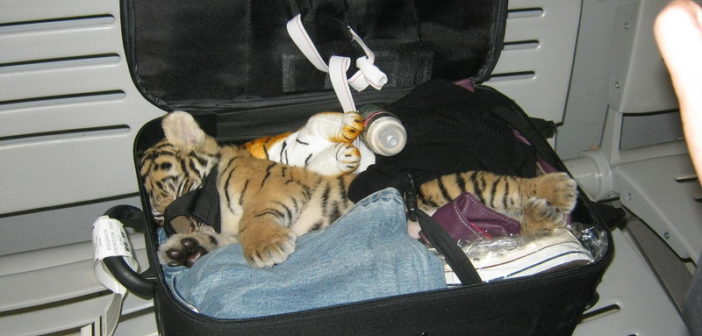Wildlife crime is a serious and escalating threat to the survival of many species and entire ecosystems. When most of us hear about the scale of the threat poaching and trafficking pose to wild animals, we hope that between NGOs, law enforcement, and international agreements like CITES (the Convention on International Trade in Endangered Species of Wild Fauna and Flora), something can be done to end wildlife crime. Unfortunately, with widespread corruption and powerful organized crime rings becoming increasingly involved in illegal wildlife trade, it just isn’t that simple.
When filmmaker and private investigator Karl Ammann began to see this issue for what it was, he decided to do something about it himself. Since the late 80s he has been investigating and documenting wildlife crime, and has created or been involved in the production of many documentaries. Ammann has been able to uncover not only shocking cruelty against animals, but also deeply-entrenched and often dangerous levels of corruption and other criminal activity.
It was a pleasure to interview Ammann and hear his perspective on how the wildlife trade is changing, why enforcement of laws that protect wildlife is so lacking, and why we can’t rely on CITES to protect wild animals.
Dylan Forest: For years you focused on the African bushmeat trade, and you’ve been credited with helping to bring that issue into widespread awareness. When I think of bushmeat, I largely think of people in poverty doing what they can to survive. Is this an accurate picture?

Karl Ammann: There is a component of subsistence hunting. However, nowadays most bushmeat seems to be for commercial resale in urban centers. The end consumer will pay a lot more for certain cuts from certain species than they would pay for beef or pork. So, bushmeat has become a luxury item both in Asia and Africa.
In your 2020 documentary The Tiger Mafia, you covered the breeding, butchering and trafficking of tigers in Southeast Asia. Large scale breeding operations — essentially wildlife factory farms — seem to be changing how wildlife crime works. Some would argue that this is a positive shift, as captive-bred animals aren’t being removed from wild populations. How would you respond to this sentiment?
If one of the most admired and majestic creatures on the planet is commodified in this way, we have a serious problem in terms of humanity and where we are going. This is especially true when their monetary value is appreciated more than the intrinsic value these cats have when they are roaming the wild. At the end of the day, a farmed tiger of 200 kilograms still sells for $50,000 US, and as such there is not a wild tiger safe in any of their remaining range countries. Poachers from Vietnam have arrived in Malaysia to go after tigers, with pretty much none left in the wild in Vietnam and Laos.
The previous question leads me to the split between conservation and animal welfare, where it’s so often assumed that you can either care about populations or individuals, but not both. You work on these issues that have huge population-level implications, but many of the most powerful images you’ve taken are centered on the suffering and deaths of individual animals. I’m curious how you think about these two scales of caring about animals. Is one scale more important to you, and are they really incompatible?
I do not see us making real progress on the conservation front, be it safeguarding life-supporting ecosystems or the valuable species within them. I would like use my documentaries to create awareness of what I see and experience. I do what few others are able to do, and go back regularly to conservation hot spots and compare developments over time. I feel we are banging our heads against a wall.
Every now and then I use my resources and connections to deal with the fate of an individual, or several of them. When I do this I am dealing with animal welfare while being fully aware that it has little to do with conservation. However, it makes me feel better to give some of these creatures a second chance. So it is possible to do both.
In many cases, you’re investigating activities that are in fact illegal, but no one is enforcing those laws. Why do you think enforcement is so lacking when it comes to wildlife crime?
A lot of conservation establishment players are set on selling feel-good messages, which of course help with fundraising. So if you go after government authorities, which are often totally corrupt and maybe even involved in illegal trade, they will find a foreign NGO in their backyard they can commission to prepare a “scientific paper” downplaying the issue and proposing solutions. These solutions always require more resources, so this can be combined with fundraising. There is never any independent third party auditing, so there is no real need for serious enforcement, especially now that some of this trade has resulted in such high profits that dealers can buy the patronage of top government officials.
Do local law enforcement agencies and officers tend to treat you as an ally? I.E., Are your investigations valued and is the evidence you gather taken into consideration?
Not really. They know that I generally dig a little deeper than the average journalist and that I come up with facts which can put them in tight spots. So they generally run if I ask them for interviews, visit their home offices or try to corner them at CITES and other meetings.
You’ve seen first-hand the failings of some of the organizations and regulatory bodies so many people put their faith in, such as CITES (the Convention on International Trade in Endangered Species of Wild Fauna and Flora). What are your thoughts on whether CITES is a solution to wildlife crime, and whether it needs to be changed in some way to effectively protect wildlife?

A lot of players want to look at it as a solution. In my opinion CITES has now become part of the problem. The level of corruption has drastically increased along with the demand for wildlife products and rare species. Selling fake and falsified permits earns many officials more than their regular salary. These officials have realized that abusing their position has become a high-reward and low-risk scenario. Overall they know that their authorities and the CITES policymakers do not see enforcement as a priority, and if they did they could be bought off. 10 years ago, a baby chimp with an export permit out of West Africa went for for $10,000 US. Some of these same dealers now ask for $100,000. That is a wide profit margin to take care of a lot of officials, brokers and agents.
You’ve documented so many problems that can seem bleak and unsolvable, especially when you factor in widespread corruption and rapidly dwindling populations of many wildlife species. In light of the harsh realities you’ve seen, how do you find the hope necessary to keep working to make change?
I keep saying my work is about taking away the excuse of: “But I did not know,” especially if it comes from policymakers. Potentially the public can also put some pressure on the policymakers, since they’re the voters and taxpayers.
I have also stated that if I see and document stuff that gives me a bad night’s sleep, I feel I have the right to give the third party something to think about when they go to bed.
It can also be a powerless feeling to watch a film like one of your wildlife crime documentaries and want so badly to do something to help but not know how. What would you suggest for everyday people who are compelled to act by your investigations?
After the Washington Post story on the investigation we did in Laos, a lot of parties contacted me asking where the donate button was on my webpage. I told them there wasn’t one. What I do, I do with my own resources. I feel more in control, and when it comes to making statements that are not politically correct, I do not have to worry about upsetting a potential donor.
I suggested to some parties that I could introduce them to some of my fixers if they wanted to go out and do research of their own and maybe create awareness on their Facebook, start a wider social media campaign and get a debate going. I offered advice and provided access to my local fixers. Half a dozen parties expressed interest but none came through in the end and took me up on my suggestions.
Most concerned individuals prefer to write checks to NGOs with beautiful slogans and targets on their webpages, and then they feel they have done their share and can now sleep well.
What are you working on now?
I do not want to talk about it at this stage. I have practically no social media exposure because it very quickly becomes a liability if one tries to fly under the radar doing investigative work.
Featured image: this tiger cub was hidden in luggage and discovered and seized at an airport in Thailand. Image credit USAID Biodiversity & Forestry, CC BY-SA 2.0.






1 Comment
I got the best Programming Assignment Help services from their experts, who showed the highest level of expertise and professionalism. Handling my project faster than expected was the best thing they could do to it, especially given that I also wanted some revision time with the paper and solutions. I’m glad I was able to understand a few more C concepts from the properly-arranged solutions. Cheers to the C Homework Help tutor!